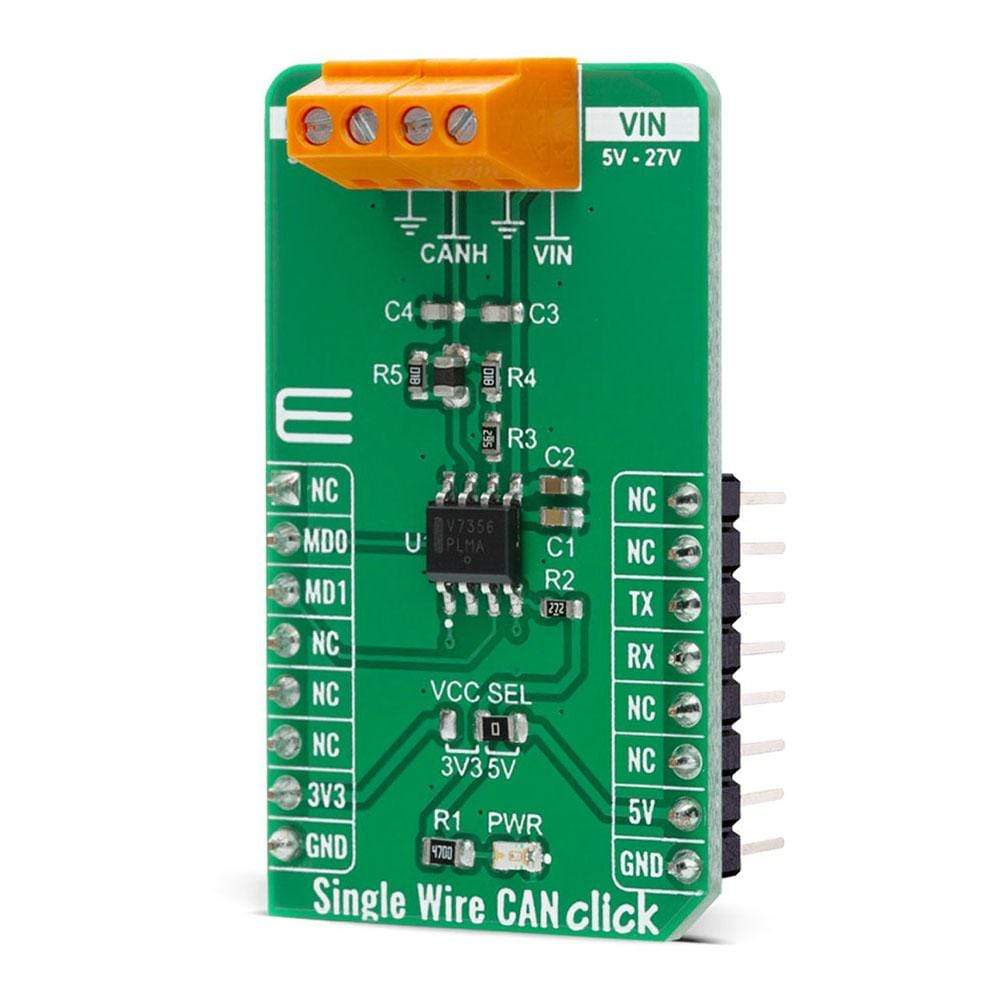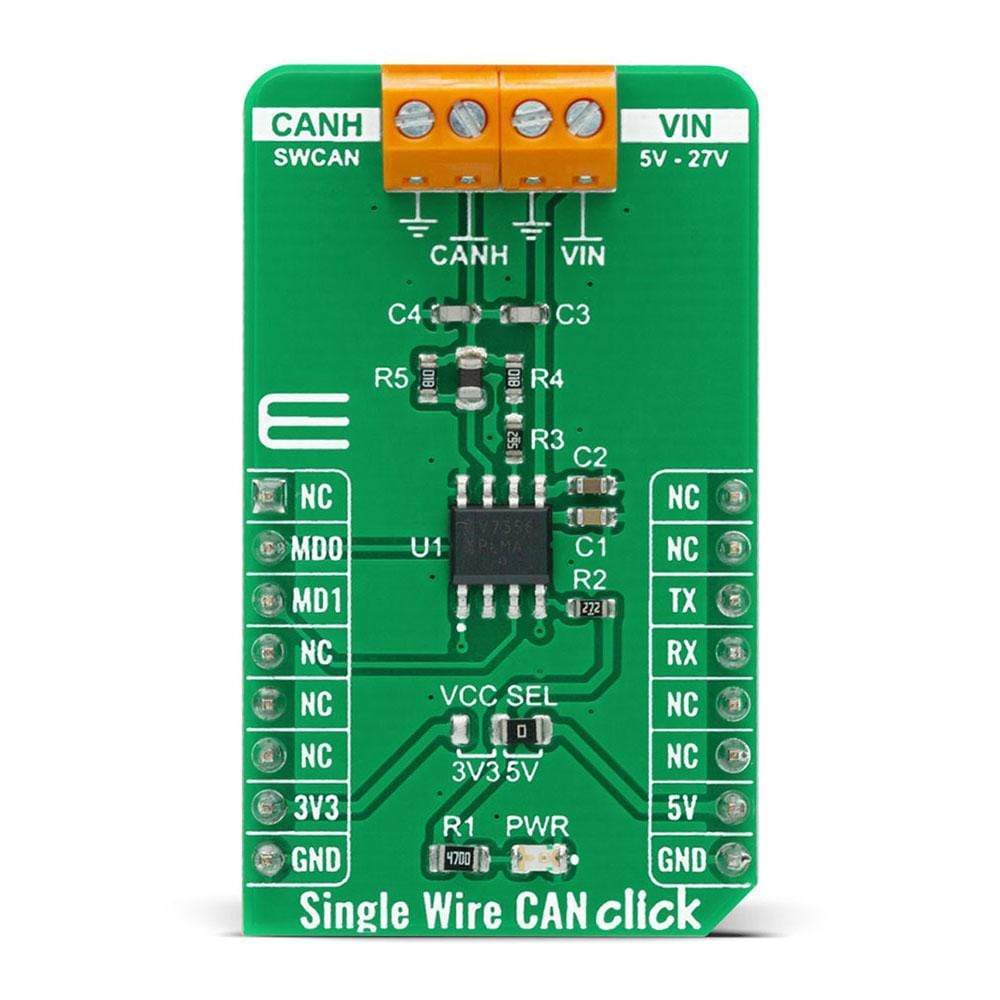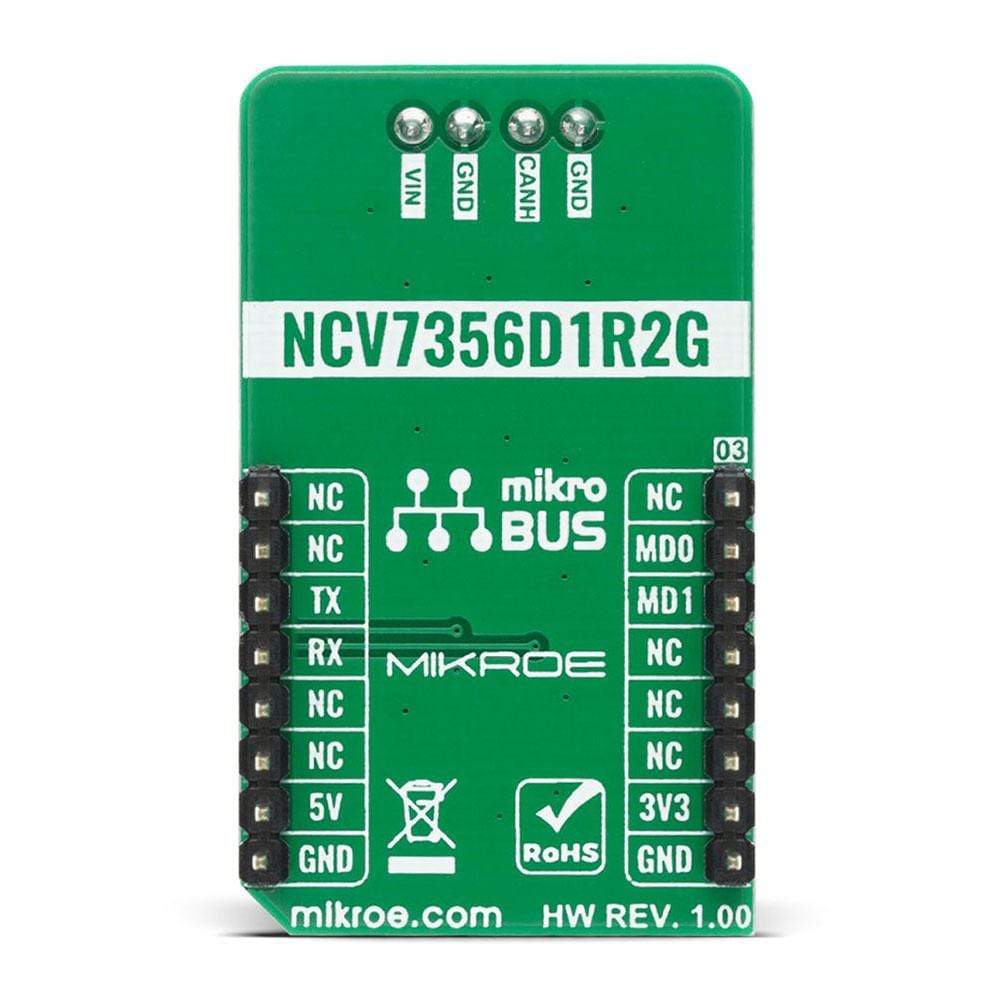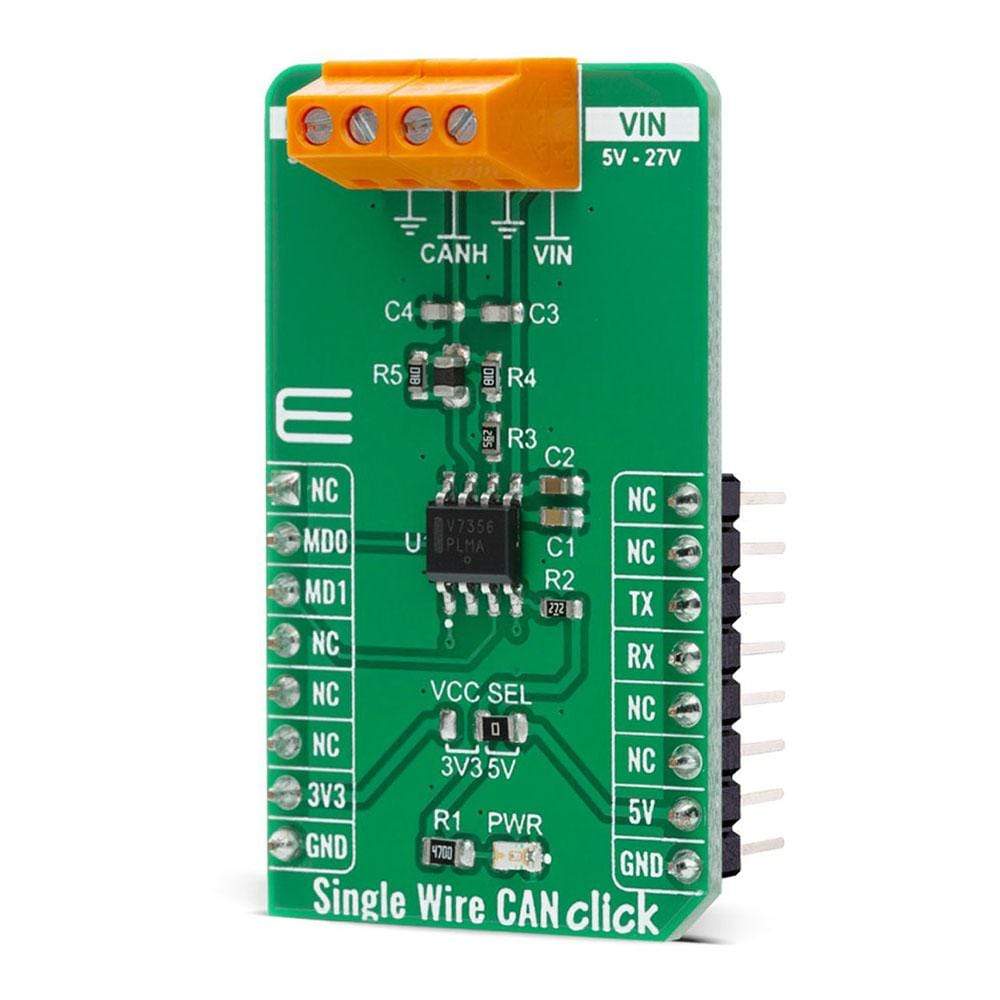
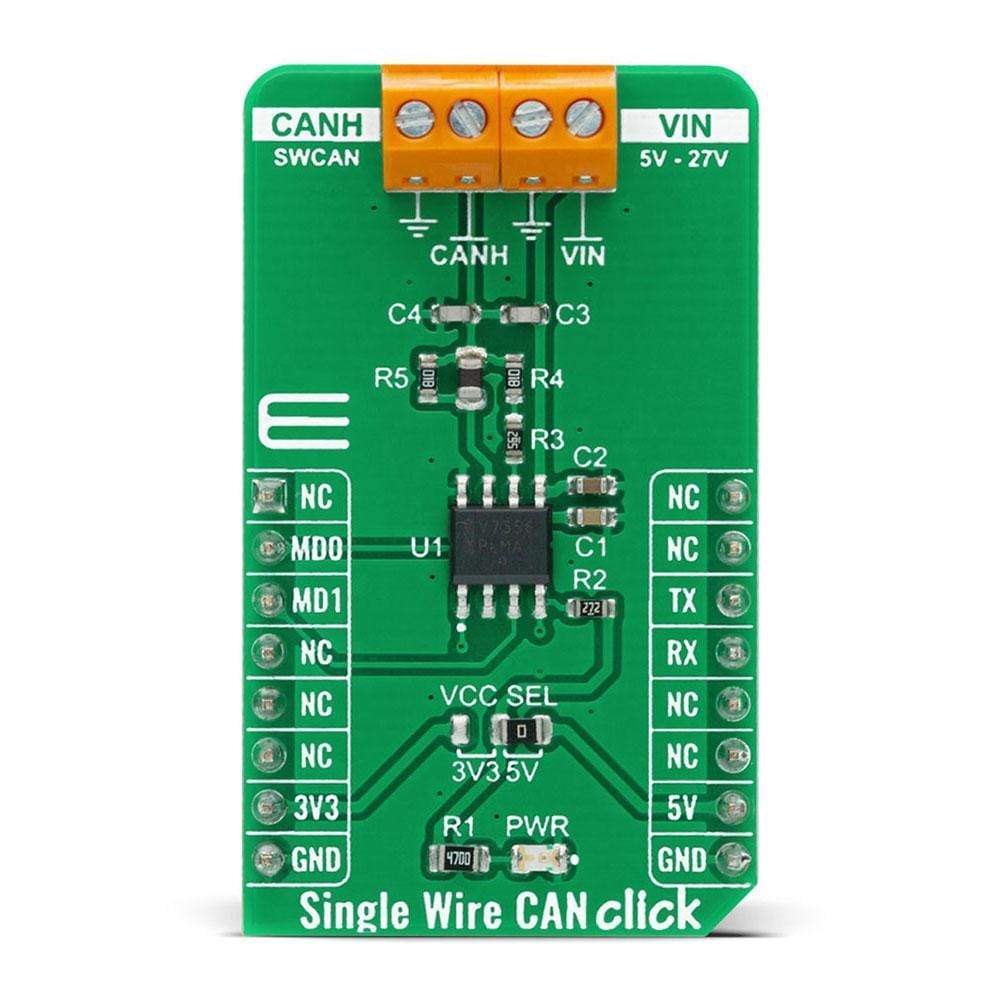
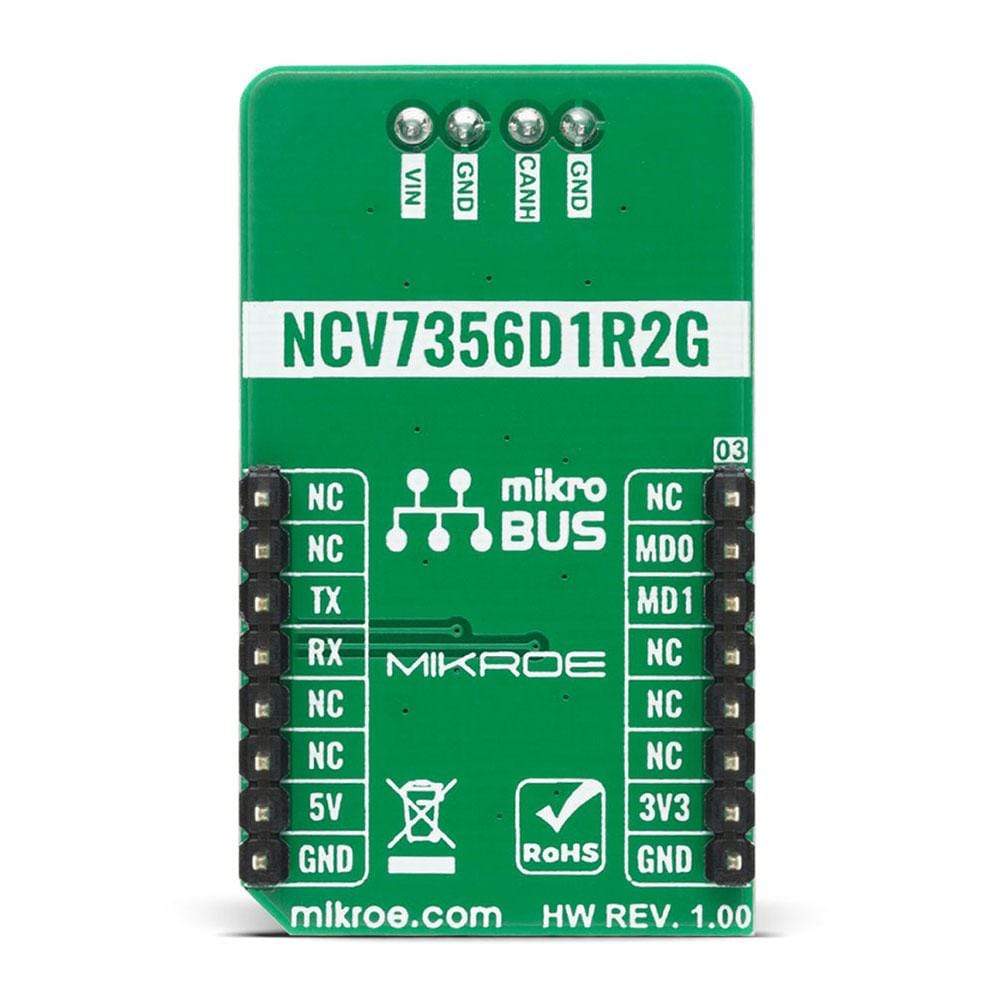
Overview
The Single Wire CAN Click Board™ is a compact add-on board that contains an IC for a single wire data link capable of operating with various protocols such as the Controller Area Network (CAN). This board features the NCV7356D1R2G, Single Wire CAN transceiver from ON Semiconductor, which operates from a supply voltage from 5V to 27V with bus speed up to 40 kbps. It supports many additional features like an under-voltage lockout, a timeout for faulty blocked input signals, output blanking time in case of bus ringing, and a very low sleep mode current. This Click Board™ can be used in industrial equipment, in-vehicle, and industrial networking, and in applications where the high data rate is not required and a lower data rate can achieve cost reductions.
The Single Wire CAN Click is supported by a mikroSDK compliant library, which includes functions that simplify software development. This Click Board™ comes as a fully tested product, ready to be used on a system equipped with the mikroBUS™ socket.
Downloads
La carte Click Board™ Single Wire CAN est une carte complémentaire compacte qui contient un circuit intégré pour une liaison de données à un seul fil capable de fonctionner avec divers protocoles tels que le réseau CAN (Controller Area Network). Cette carte comprend le transceiver CAN Single Wire NCV7356D1R2G d'ON Semiconductor, qui fonctionne à partir d'une tension d'alimentation de 5 V à 27 V avec une vitesse de bus allant jusqu'à 40 kbps. Il prend en charge de nombreuses fonctionnalités supplémentaires telles qu'un verrouillage en cas de sous-tension, un délai d'attente pour les signaux d'entrée bloqués défectueux, un temps de suppression de sortie en cas de sonnerie de bus et un courant de mode veille très faible. Cette carte Click Board™ peut être utilisée dans les équipements industriels, les véhicules et les réseaux industriels, ainsi que dans les applications où le débit de données élevé n'est pas nécessaire et où un débit de données inférieur peut permettre de réduire les coûts.
Le Single Wire CAN Click est pris en charge par une bibliothèque compatible mikroSDK, qui comprend des fonctions qui simplifient le développement logiciel. Ce Click Board™ est un produit entièrement testé, prêt à être utilisé sur un système équipé du socket mikroBUS™.
| General Information | |
|---|---|
Part Number (SKU) |
MIKROE-4225
|
Manufacturer |
|
| Physical and Mechanical | |
Weight |
0.02 kg
|
| Other | |
Country of Origin |
|
HS Code Customs Tariff code
|
|
EAN |
8606027380242
|
Warranty |
|
Frequently Asked Questions
Have a Question?
Be the first to ask a question about this.

